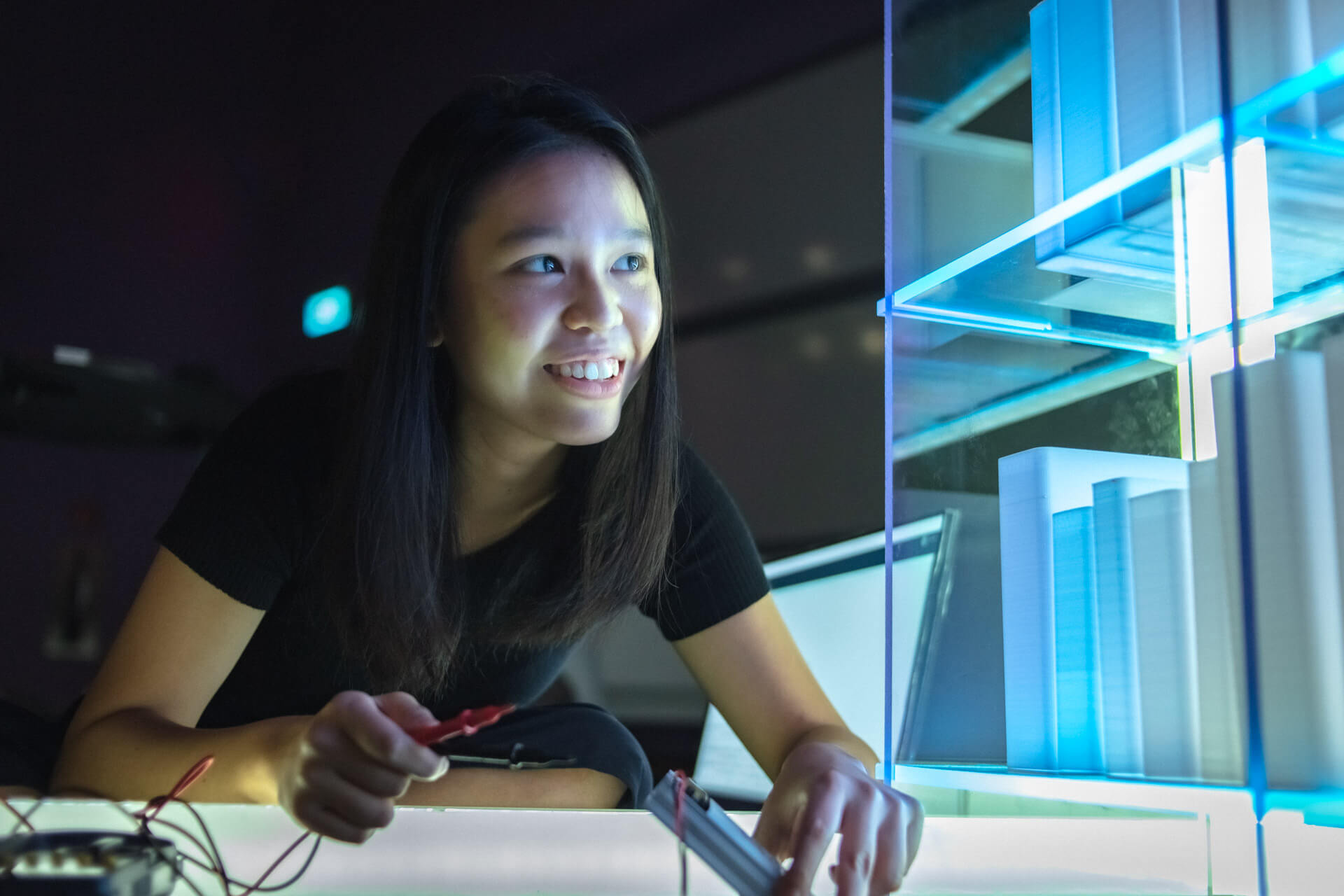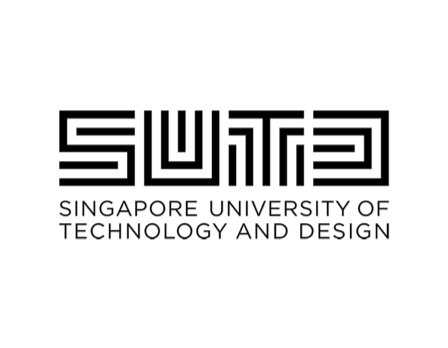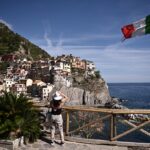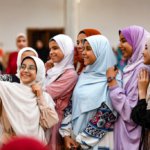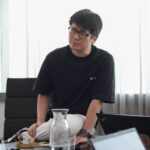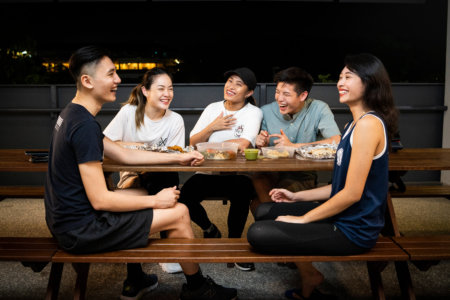Georgia Tan Hui Yi remembers the moment she chose Singapore University of Technology and Design. It was during a school field trip to the university; she was amazed by the installations of student work in the library, as well as the 3D printers, laser cutters, and other fascinating equipment they used to bring their ideas to life.
Passionate about combining aesthetics with functionality, she hopes to soon pursue the Architecture and Sustainable Design (ASD) pillar after her current Freshmore year. “I hope to become a sensitive problem solver through critical design thinking, which we learn in Design Thinking and Innovation; getting to know things like ethics, which we learn in Humanities, Arts and Social Sciences; as well as the fragility of our environment, which we learn in Science for a Sustainable World,” she shares.
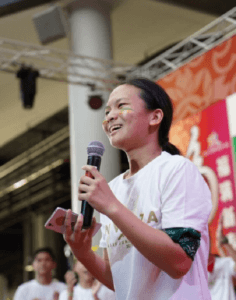
Georgia Tan Hui Yi is finding the Freshmore curriculum enriching and inspiring. Source: SUTD
As the world transforms, young people like Georgia are actively preparing themselves for the uncertain future. They want to build future skills for future work — which is where young institutions like SUTD come in. Free from the fetters of traditional higher education, this university focuses on equipping students with the tools to achieve their own technology and design vision.
The result? Highly employable graduates who easily find their place in the working world. Even in an uncertain economy, SUTD’s Class of 2020 achieved a 95.9% employment rate. Among those who are permanently employed full-time, 94.4% received at least one job offer, while 50.3% received multiple job offers.
It’s no wonder that leading architect Brian Yang from Danish firm Bjarke Ingels Group expressed how the work SUTD students produce is on par with the world’s best, and was most impressed with how they came up with transformative visions for the future.
Here’s how they do it at Singapore’s leading technology and design university, where they empower students to rise to new and emerging challenges.
Embrace an innovative culture of self-learning
At the inaugural SUTD Design Innovation Forum, entrepreneur and inventor Sir James Dyson said that failure is the way to progress, which highlights the importance of self-learning in creative pursuits. He believes young people are in the best position to solve the world’s problems — uninhibited by the experience of how things used to be done, they must do it “through intelligence, through failure, and through research and design”.
This is in line with SUTD’s focus on design thinking, which builds on the intersection of various interconnected disciplines. Take for example their Freshmore curriculum, which introduces students to Science, Mathematics, and Technology; Humanities, Arts and Social Sciences (HASS); Digital Literacy and Design in their first year. “It marries theoretical knowledge with practical application, meaning we manage our studies while learning about different hardware and their tangible application,” Georgia explains, adding that she has picked up computer-aided design and Python coding.
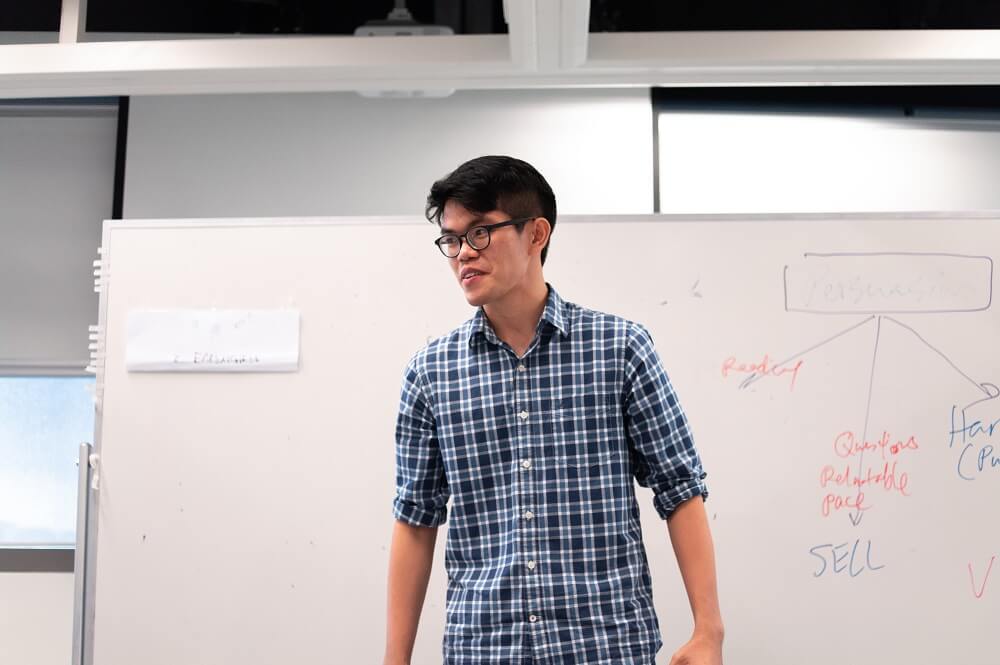
Adam Idris Lim Wei is finding his place in the digital future at SUTD. Source: SUTD
For Engineering Product Development (EPD) senior Adam Idris Lim Wei, that first year helped set the tone for his degree and career expectations. The future product engineer was inspired by the perspectives his classmates brought to their projects. “In SUTD, there is an undying excitement of discovering what can be,” he reflects. “Whenever we think of something fun or brilliant to do, we grab a couple of friends and we just do it. I would like to believe that we are, at our core, a school of dreamers.”
Adam specialises in Beyond Industry 4.0, which is “predicated on the idea that the technology we see today has the potential to be smarter, more efficient and more sustainable.” He has explored artificial intelligence, machine learning, and the internet of things to understand his role as an instrument of change. “This is where the willingness to seek out new knowledge becomes an indispensable quality; being curious and adventurous helps us redefine what existing technologies could mean to us,” he explains.
During a fulfilling internship with Baumann Spring Singapore last year, Adam got to play project manager, creator, and implementer for a new machine. He also brushed up on his coding and CAD skills. Next, he is excited to pursue his career with the Singapore Civil Defence Force, where he will integrate technology with emergency response protocols.
Expand on critical thinking and collaboration
In her pursuit of web development expertise, Information Systems Technology and Design (ISTD) junior Naomi Kong-Vega found more than she expected at SUTD. “Being given the opportunity to come up with our own designs and ideas, and refine them with feedback from the professors made me learn that I love ideating solutions that can help people. Learning how to really build the product from my fellow peers makes me very excited to see what I can come up with in the future,” she relays.
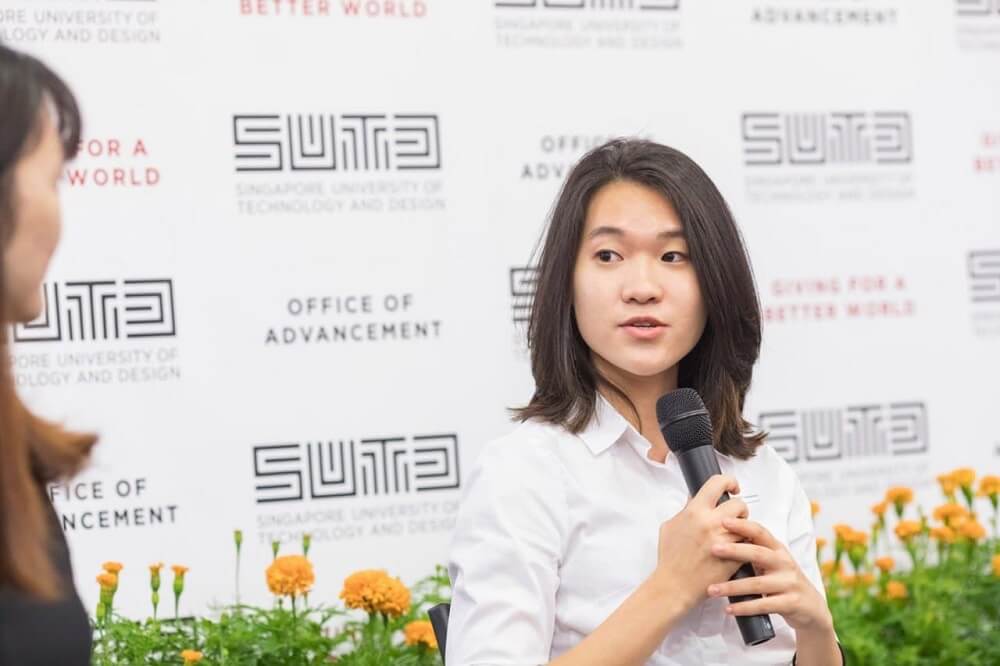
Naomi Kong-Vega is looking forward to specialising in artificial intelligence. Source: SUTD
Naomi appreciates the learning environment at SUTD, which encourages students to seek knowledge beyond books and the university. “Given that computer science is a broad field and there are always new languages and software tools to learn, some students even formed their own clubs such as the Digital Design and Development Club (3DC) to share the latest tech tools that may not be in the curriculum with the SUTD community,” she adds. She is also excited to begin her AI specialisation, saying, “SUTD is very supportive of the AI scene here, and there’s a lot of highly experienced professors who will be willing to mentor you in any AI research project you might want to initiate.”
Building on the Freshmore year marks the beginning of collaborative learning, where students with unique skill sets are brought together to exchange ideas and expertise. It is the same exposure that enabled alumnus Safafisalam Bohari Jaon to eventually build his ambitious capstone project. As an Engineering Systems and Design (ESD) student specialising in Business Analytics and Operations Research, he spent eight months of his final year together with his team mates from ESD and ISTD to create an AI-augmented platform for cancer researchers. His foundational knowledge in biology — and continued exposure to the software engineering projects of his peers — allowed him to approach the project from multiple viewpoints.
“Interdisciplinary learning cultivates a habit of curiosity and gives us the ability to derive significant learnings from people who have invested much more time into a particular area of knowledge. Much of learning is sustained by curiosity, and a curious question is rarely derived from scratch,” he muses. Safafisalam also credits his programme’s strong industry links for showing him how classroom lessons bring actual value to real-world scenarios.
“With each project feeling like a hackathon, we are encouraged to innovate through action rather than through theory. This arms us with the ability to learn skills that are necessary for innovation now rather than later,” he adds. Combined with the support from their Career Development Centre and the Entrepreneurship Centre, SUTD provides an environment of well-rounded support for young visionaries embarking on their vocation.

Safafisalam Bohari Jaon’s ability to self-learn led to an ambitious capstone project and rewarding first job. Source: SUTD
Explore your potential in technology and design
Technology is evolving faster than we can implement it, which makes any knowledge in this space temporary. That’s why an SUTD education fosters a growth mindset that graduates carry throughout their career. It’s what helped Safafisalam land his first job at multinational company FWD Insurance, where he delivers digital strategy across rotations and departments.
“Learning how to dissect problems solvable only by technologies we have yet to learn will never go out of fashion,” he shares. “Although I continue to learn even after I’ve graduated, I still treasure the passionate environment I was blessed with — one that only a school of curious learners can forge. That’s what awaits you at the Singapore University of Technology and Design.”
Start forging your unique path in technology and design to better the world today; head over to the official website to find out how.

